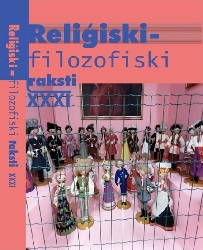Fr Pavel Florensky’s Concept of a ‘Living Museum’ in the Context of Atheist Criticism
Fr Pavel Florensky’s Concept of a ‘Living Museum’ in the Context of Atheist Criticism
Author(s): Alexander KopirovskySubject(s): Museology & Heritage Studies, History of Church(es), Visual Arts, Philosophy of Religion, Pre-WW I & WW I (1900 -1919), Interwar Period (1920 - 1939)
Published by: Latvijas Universitātes Filozofijas un socioloģijas institūts
Keywords: ‘living museum’; Holy Trinity-St. Sergius Lavra; Fr Pavel Florensky; Mikhail Galkin; atheist critique; ‘Soviet spirituality’;
Summary/Abstract: In this article, to discover what ‘Soviet spirituality’ is, the author analyses the collision between two visions for the form and content of a working art-historical museum, created after the October Revolution of 1917 at one of Russia’s best-known monasteries – the Holy Trinity-St. Sergius Lavra. One of the visions belonged to the well-known natural scientist and theologian, who from 1911 was also a priest – Fr Pavel Florensky. In his vision, Florensky tried to develop ideas related to a new sensibility and comprehension of works of church art. In the period of his creativity immediately prior to this, in his book The Pillar and Ground of the Truth (1914), Florensky had been able to show that ancient icons were not primitive art, and that they needed to be interpreted primarily as a complex, metaphysical phenomenon. In later articles (1918–1929), written in the period before his arrest and subsequent execution by firing squad in 1937, he developed an integral concept for a ‘living museum’. Through such a museum church architecture, frescoes, iconography, applied church art (useful objects), music, etc., all exist together in an environment, which is completely natural to them and in connection with the liturgical life of the church / service to God. For Florensky, the brightest example of such a ‘living museum’ was the Holy Trinity-St. Sergius Lavra, a monastery complex in greater Moscow (15th–19th centuries) with a rich history, which had preserved artistic treasures of international significance. The reception of Florensky’s concept with regard to the activity of museums alone, would be outside the integral, and in many ways utopian, context of Florensky’s thought, which is directed at global change in culture and at the “destruction of the watershed of world spirituality” (Sergei Khoruzhy), i.e. toward the completion of a synthesis between the culture of antiquity and Christian culture. Therefore, the embodiment of Florensky’s idea only in the context of a museum would only be just another form of ‘Soviet spirituality’, albeit not as radical as earlier expressions thereof.
Journal: Religiski-filozofiski raksti
- Issue Year: XXXI/2021
- Issue No: 3
- Page Range: 27-44
- Page Count: 19
- Language: English

